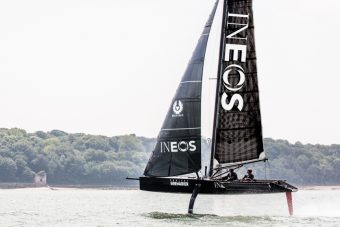An INEOS Styrolution research and development project reported an overall energy savings of up to 67% through the life cycle of a new styrenics polymer compound. The comparison styrenics compound was traditional Polyamide 12 (PA12). The massive savings derived from the new material benefits manufacturers and customers alike, let alone the wider environmental benefits supplied by energy-efficient products.
This research breakthrough comes as Joseph Biden Jr.‘s democratic party takes control of the United States’ Senate, a major breakthrough for environmentalists. Biden has promised a major infusion of government funds into green technologies in the coming years. With control of Congress now assured for two years, congressional Democrats will be able to implement the incoming President’s plans. This news, moreover, occurs in conjunction with sustained European Union efforts to fund green AM projects.
INEOS Styrolution focuses on designing and creating styrene monomer, polystyrene, ABS Standard and styrenic materials. The company offers innovative and sustainable solutions, which are meant to give customers a competitive edge in their markets. The company is particularly concerned with building circular economies that sustainably use styrenics. In 2019, the company’s sales totaled 5 billion euros. INEOS Styrolution employs approximately 3,600 people and operates 20 production sites in ten countries.
Manufacturing on Demand

The project, known as the PolySLS project, was started in August 2017 and carried out in collaboration with the Süddeutsche Kunststoffzentrum and the Friedrich-Alexander-University Erlangen-Nuremberg. The project ended in November 2020. The PolySLS was funded by the German Ministry for Economic Affairs and Energy. The purpose of the PolySLS project was to develop and test a new styrene-based polymer compound for Selective Laser Sintering. A particular focus of the project was on researching energy and material requirements.
A direct energy saving of 25% was achieved from the 3D printing equipment when using the new styrenics polymer, which resulted from lower process temperatures and shorter heating and cooling phases. These shorter phases also improved the time needed to complete printing jobs, with processing times 7.5 percent shorter than with PA12.
Bianca Wilhelmus, Global Application Development Manager at INEOS Styrolution and Project Lead for PolySLS, said that: “Styrenics based materials continue to amaze me. Even 90 years after the first production of polystyrene, there are still new things to explore. Styrenics based materials have incredible, beneficial properties.”
Yvonne van Veen, Market Innovation Strategy Director at INEOS Styrolution, added: “With the additive manufacturing industry growing at very high rates, we are excited we have developed a material that not only contributes to energy saving and sustainable production but also is an easy material to handle in the printing process.”
* This article is reprinted from 3D Printing Media Network. If you are involved in infringement, please contact us to delete it.
Author: Adam Strömbergsson

Leave A Comment